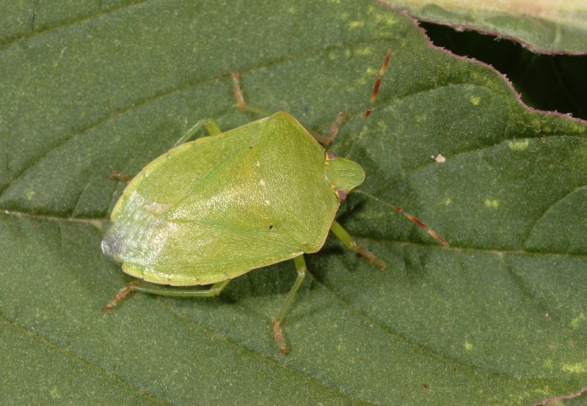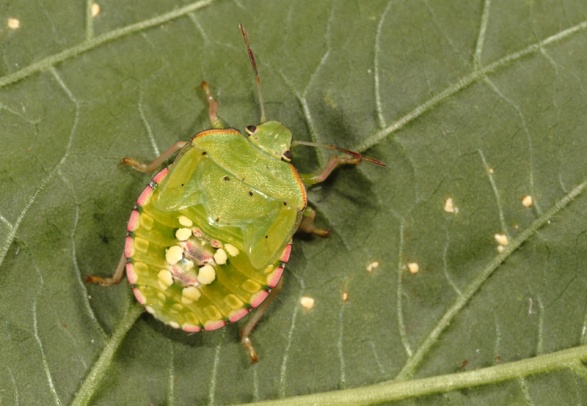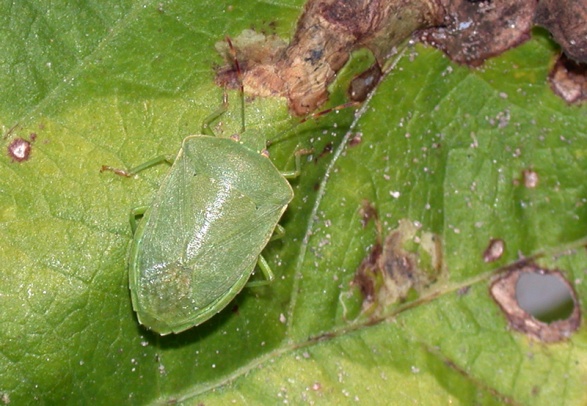
Southern green stink bug
Nezara viridula (Linnaeus)
(Insecta: Hemiptera: Pentatomidae)
The shield-shaped adult bugs are about 12 to 17 mm long, green, and emit a malodorous scent. Eggs are barrel shaped, white to light yellow, and arranged in single-layer egg masses glued to the undersurface of leaves. Nymphs change their color from brownish orange (first instar) to almost black (second and third instars) to include more and more green (fourth and fifth instar). All nymphs show characteristic patterns of white, yellow and red spots.
The life cycle from egg to adult requires about 35 days during the warm season and 70 days during the cold season. Four to five generations occur per year until adults overwinter. The nonfeeding first instars remain aggregated at hatch, then disperse as second instars to feed and undergo an additional three instars.
Likely a native to Ethiopia, southern green stink bug now occurs in the tropics and subtropics of Europe, Asia, Africa, and North, Central, and South America. Its distribution in North America spans the southeastern states and extends along the south to the west coast.
This polyphagous species feeds on numerous important food crops.
Images
To
save the Web-optimized images shown below to your hard drive:
PC users: right click to "Save Picture (or Image) As..."
Mac users: click and drag to your desktop.

Adult of southern green stink bug, Nezara viridula (Linnaeus)
(Photographer: Lyle Buss, University of Florida)

Fifth instar of southern green stink bug, Nezara viridula (Linnaeus)
(Photographer: Lyle Buss, University of Florida)

Adult of southern green stink bug, Nezara viridula (Linnaeus), on damaged foliage
(Photographer: Lyle Buss, University of Florida)